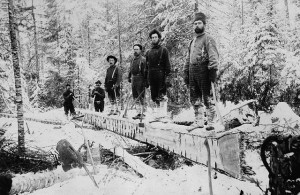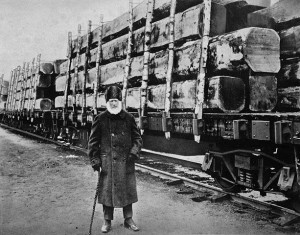Video Room
A survey of Forestry companies in Canada indicates the sector is desperate for skilled employees, including Forestry Technicians. The Forestry Products Association of Canada authored this job market report projecting 60,000 vacancies in the forestry industry by 2020. Want to learn more about forestry career types? Check out the Greenest Workforce for the latest in job matching in the forestry products industry.
 The Heritage of Forestry
The Heritage of Forestry
The Forestry Technician program at Algonquin College Pembroke Waterfront Campus was a result of community input. The City of Pembroke rests on the shores of the Ottawa River and is surrounded by pristine lakes, picturesque farmland, and vast tracts of forest. There is a long tradition of logging in the area and a great demand for every level of trained forestry workers.
One of the earliest records of forestry activity along the Ottawa River dates back to around 1800. That’s when settler Philomen Wright and his family used horses to skid logs along the ice near Hull, Quebec, downriver from where Pembroke would eventually become a major centre for the forestry industry.
 One of the most successful lumber barons was J.R. Booth, seen with a shipment of squared timber ready for transport. Photo above is of one of J.R. Booth’s lumber camp at Aylen Lake, 1895 (photo courtesy of the National Archives). Since the late nineteenth century, dozens of lumber companies employing hundreds of loggers operated in the Ottawa Valley, developing a forestry tradition that still exists today.
One of the most successful lumber barons was J.R. Booth, seen with a shipment of squared timber ready for transport. Photo above is of one of J.R. Booth’s lumber camp at Aylen Lake, 1895 (photo courtesy of the National Archives). Since the late nineteenth century, dozens of lumber companies employing hundreds of loggers operated in the Ottawa Valley, developing a forestry tradition that still exists today.
In 1971, Algonquin College, Upper Ottawa Valley Campus as it was known then, saw its first 21 graduates of the Forestry Technician diploma program. Now, over 45 years later, the Forestry Technician program continues to evolve, incorporating modern forestry practices and many new technologies. Since that first graduating class, hundreds of well-trained Algonquin College forestry graduates have brought their valuable skills and knowledge to the forestry field across Canada and around the world.